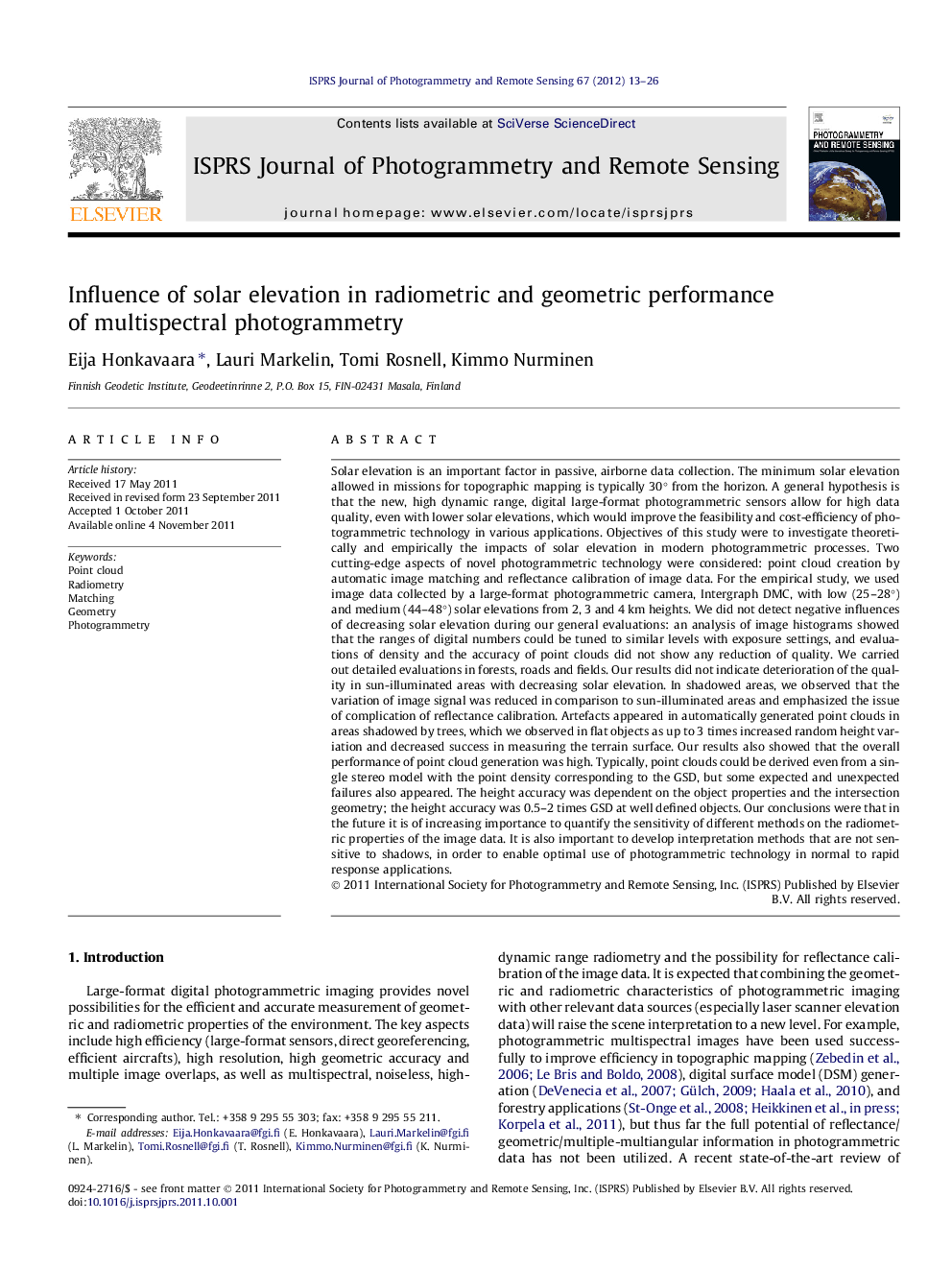| کد مقاله | کد نشریه | سال انتشار | مقاله انگلیسی | نسخه تمام متن |
|---|---|---|---|---|
| 557336 | 1451307 | 2012 | 14 صفحه PDF | دانلود رایگان |

Solar elevation is an important factor in passive, airborne data collection. The minimum solar elevation allowed in missions for topographic mapping is typically 30° from the horizon. A general hypothesis is that the new, high dynamic range, digital large-format photogrammetric sensors allow for high data quality, even with lower solar elevations, which would improve the feasibility and cost-efficiency of photogrammetric technology in various applications. Objectives of this study were to investigate theoretically and empirically the impacts of solar elevation in modern photogrammetric processes. Two cutting-edge aspects of novel photogrammetric technology were considered: point cloud creation by automatic image matching and reflectance calibration of image data. For the empirical study, we used image data collected by a large-format photogrammetric camera, Intergraph DMC, with low (25–28°) and medium (44–48°) solar elevations from 2, 3 and 4 km heights. We did not detect negative influences of decreasing solar elevation during our general evaluations: an analysis of image histograms showed that the ranges of digital numbers could be tuned to similar levels with exposure settings, and evaluations of density and the accuracy of point clouds did not show any reduction of quality. We carried out detailed evaluations in forests, roads and fields. Our results did not indicate deterioration of the quality in sun-illuminated areas with decreasing solar elevation. In shadowed areas, we observed that the variation of image signal was reduced in comparison to sun-illuminated areas and emphasized the issue of complication of reflectance calibration. Artefacts appeared in automatically generated point clouds in areas shadowed by trees, which we observed in flat objects as up to 3 times increased random height variation and decreased success in measuring the terrain surface. Our results also showed that the overall performance of point cloud generation was high. Typically, point clouds could be derived even from a single stereo model with the point density corresponding to the GSD, but some expected and unexpected failures also appeared. The height accuracy was dependent on the object properties and the intersection geometry; the height accuracy was 0.5–2 times GSD at well defined objects. Our conclusions were that in the future it is of increasing importance to quantify the sensitivity of different methods on the radiometric properties of the image data. It is also important to develop interpretation methods that are not sensitive to shadows, in order to enable optimal use of photogrammetric technology in normal to rapid response applications.
Journal: ISPRS Journal of Photogrammetry and Remote Sensing - Volume 67, January 2012, Pages 13–26